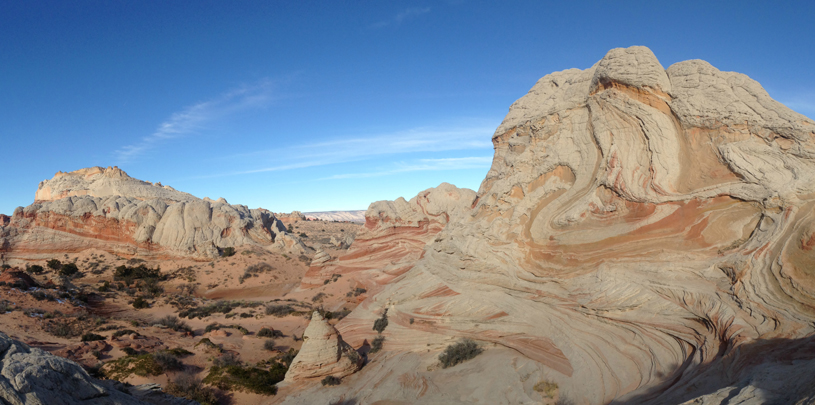
 by Cerissa Hoglander, Land Conservation Associate
by Cerissa Hoglander, Land Conservation Associate
For the few staff and volunteers that work on the Vermilion Cliffs National Monument bat species project, the monthly maintenance of nine monitoring stations on the Paria Plateau guarantees adventure. Weather comes in extremes here. Summers in this arid region can reach 120°F with little shade in the sagebrush, while winter months dip into the teens.
One October, we awoke to fierce winds buckling our tent and ripping out stakes. Our sleeping pads and bags were like sails in our fists as we retreated to the field truck to spend the night awkwardly positioned among shovels, Pelican cases, and seats that wouldn’t recline. In January, we learned to keep camp fuel and water bottles thawed in our sleeping bags so below-freezing temperatures wouldn’t slow our morning coffee-making. And in summer, we changed a flat front tire in the morning, only to blow out a second back tire on our way off the Plateau.
As the threat of the lethal White-nose Syndrome moves west across the country, understanding the diversity and distribution of bat species in this region is a critical first step in conservation management. Equipped with ultrasonic microphones, our bat monitoring stations record the unique calls of bat species that live on the Paria Plateau. Each month, we hike with hefty 12-V batteries and memory card replacements to test and update each of the stations. We cross our fingers that curious cows haven’t toppled stations and that hungry rodents haven’t chewed through cables.
Red and ivory-colored rock formations, carved and molded by years of water and wind, emerge from sagebrush hills. Thick juniper and piñon forests give way to open scrublands. Intermittent patches of snow appear in peak winter, and in the thaw, coral-colored globemallows blossom in waves throughout the landscape.
We navigate not by road signs but by GPS on faint two-tracks of fine sand that suck in the passenger cars of unknowing tourists and threaten even the bravest of truck tires. We hike over slickrock, dodging precious cryptobiotic soil crusts and startling jackrabbits and desert cottontails hidden in the brush. We camp in silence under a blanket of stars and the glow of the Milky Way, sometimes treated to the howl of coyotes or the hooting of a distant great-horned owl. And some nights, some rare nights, we fall asleep wondering if we hear the faint clicks of spotted bat echo-location overhead or if it is merely our weary conservationist’s dream.
80% of Arizona voters support Baaj Nwaavjo I'tah Kukveni National Monument, according to a new poll.
Read MoreUtah voters strongly support national monuments in general, and Bears Ears and Grand Staircase-Escalante in particular, a new poll shows.
Read MoreDon't let a little snow keep you from visiting the Grand Canyon. Here's everything you need to know for a winter trip to the big ditch.
Read More